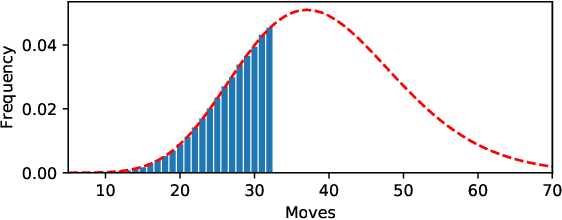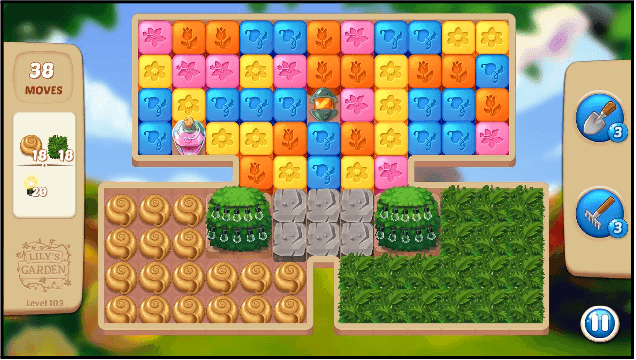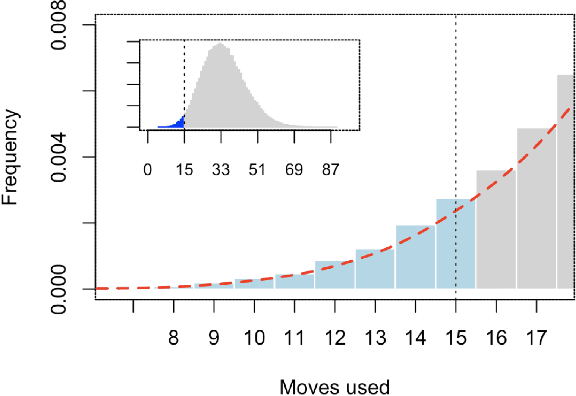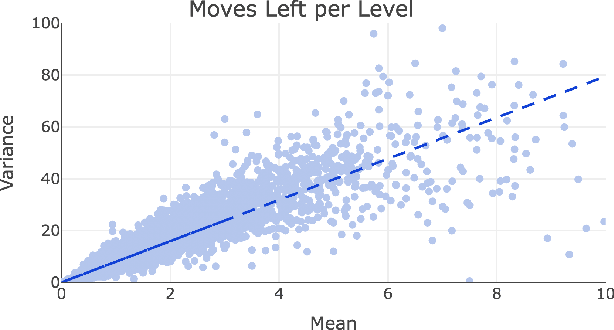Statistical Modelling of Level Difficulty in Puzzle Games
Paper and Code
Jul 08, 2021



Successful and accurate modelling of level difficulty is a fundamental component of the operationalisation of player experience as difficulty is one of the most important and commonly used signals for content design and adaptation. In games that feature intermediate milestones, such as completable areas or levels, difficulty is often defined by the probability of completion or completion rate; however, this operationalisation is limited in that it does not describe the behaviour of the player within the area. In this research work, we formalise a model of level difficulty for puzzle games that goes beyond the classical probability of success. We accomplish this by describing the distribution of actions performed within a game level using a parametric statistical model thus creating a richer descriptor of difficulty. The model is fitted and evaluated on a dataset collected from the game Lily's Garden by Tactile Games, and the results of the evaluation show that the it is able to describe and explain difficulty in a vast majority of the levels.
 Add to Chrome
Add to Chrome Add to Firefox
Add to Firefox Add to Edge
Add to Edge